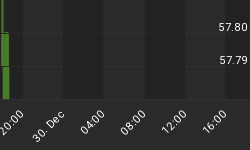
We have looked at central bank gold market demand and showed just what a dynamic force it's becoming, just below the surface of the gold market. It's a relatively price-insensitive force that's strong day-to-day, clearing the market of stock when available. It enters the market in a way that leaves the market relatively undisturbed. But the rest of demand is very different. It's this other demand that will drive the gold price. Some of it is price sensitive, some not. Some is price sensitive in a surprising way. Some simply take us tonnage without being in itself a driving force. There are some forces that have no intention of holding gold for longer than their short-term view persists and then will sell it again.
Within the above parameters, it's extremely difficult to define gold demand accurately. The major difficulty lies in the difference in the motives for buying gold in the first place. For instance, the motive for Indians buying gold jewelry is very different from the motive behind developed world buying of gold.
We face the same difficulty in defining supply too. "Re-cycled" is a general term that does not touch on the motives for selling gold, and yet re-cycled gold is currently supplying 36% of supply. The motives behind re-cycling gold are very different in one part of the world to another and from one seller to the next.
These differences in the motives for buying and selling gold have a considerable impact on the price of gold. That's what makes an understanding of these so critical. With an investor in gold needing so much more information than a trader -who can restrict himself to technical analysis-- it is critical for him to understand these facets of the market.
Click link for: ![]() Gold supply and demand (WGC presentation) (PDF)
Gold supply and demand (WGC presentation) (PDF)
Different Demand Types on the Gold Price
Technology
As you can see this demand is persistent, steady, and predictable, usually taking the shape of a contract to deliver in this pattern throughout the year. This predictability ensures it has little impact on the daily price of gold. In base metals this component of demand can rise up to 90% of total demand. This makes the remaining 10% of selling and buying (discretionary) unpredictable and the major influence on that metal's price. In the gold market, this facet of demand makes up only 10.5% of demand, leaving the balance of demand less predictable.
Furthermore, it's fair to assume that barring any major change in the state of the global economy, this component of demand will not fall. The emergence of Asia is now part of that formula and is unlikely to cause any major variation of that demand.
By far the greatest bulk of the demand from industry is consumed, never to return to the market, but that only amounts to 140 to 150 tonnes of demand; however, in uses such as the computer industry, there are determined efforts to reclaim and re-cycle that gold. This inevitably softens the impact of this demand on the gold price as much of it is reclaimed and recycled. Electronics uses 71% [330 tonnes] of Technology demand with the balance making up dentistry and other industrial uses, which are not re-cycled. Once that gold is in the mouth it doesn't come out again.
The result is that Technology demand is not a day-to-day price driver. Its impact on the price is that it takes off an amount from supply, lessening the volume that will affect the price.
Jewelry (Developed World)
In the developed world, it means jewelry with a gold content. Its quality doesn't matter that much except to express status for the average western woman who would almost never think of it as a form of money. It is almost exclusively for decorative purposes. The thought of melting it down for sale as gold would appear destructive to its owners. So whether it is 9-carat, 18-carat or 22-carat simply states its cost to the observer. As a piece of gold it has little other meaning.
Even melting it down to make new pieces from it is foreign to the average western woman. As to considering it a part of a household's financial security -only if the piece were of particular note-- would that ever be contemplated. The current gold selling parties, where a jeweler gathers a group of women together and buys their old unused jewelry from them is the exception. Usually it involves pieces long sent up to the attic. We expect this facet of supply from the jewelry industry to last for a few years only, before that western world source is exhausted; however, it is a significant amount of the supply component. It's price sensitive to the extent that sellers remember the low prices paid for the gold, i.e. - $300 or less?, and see a windfall profit never expected. Don't expect to see these sellers buy again.
Member's only:
Jewelry (Emerging World)
Get the rest of the series. Subscribe @
www.GoldForecaster.com / www.SilverForecaster.com
















